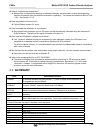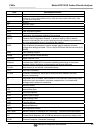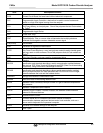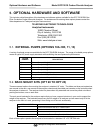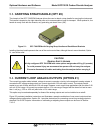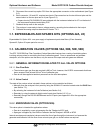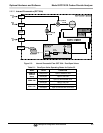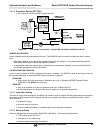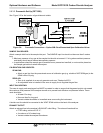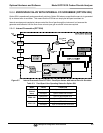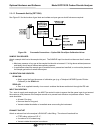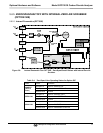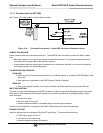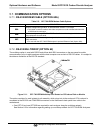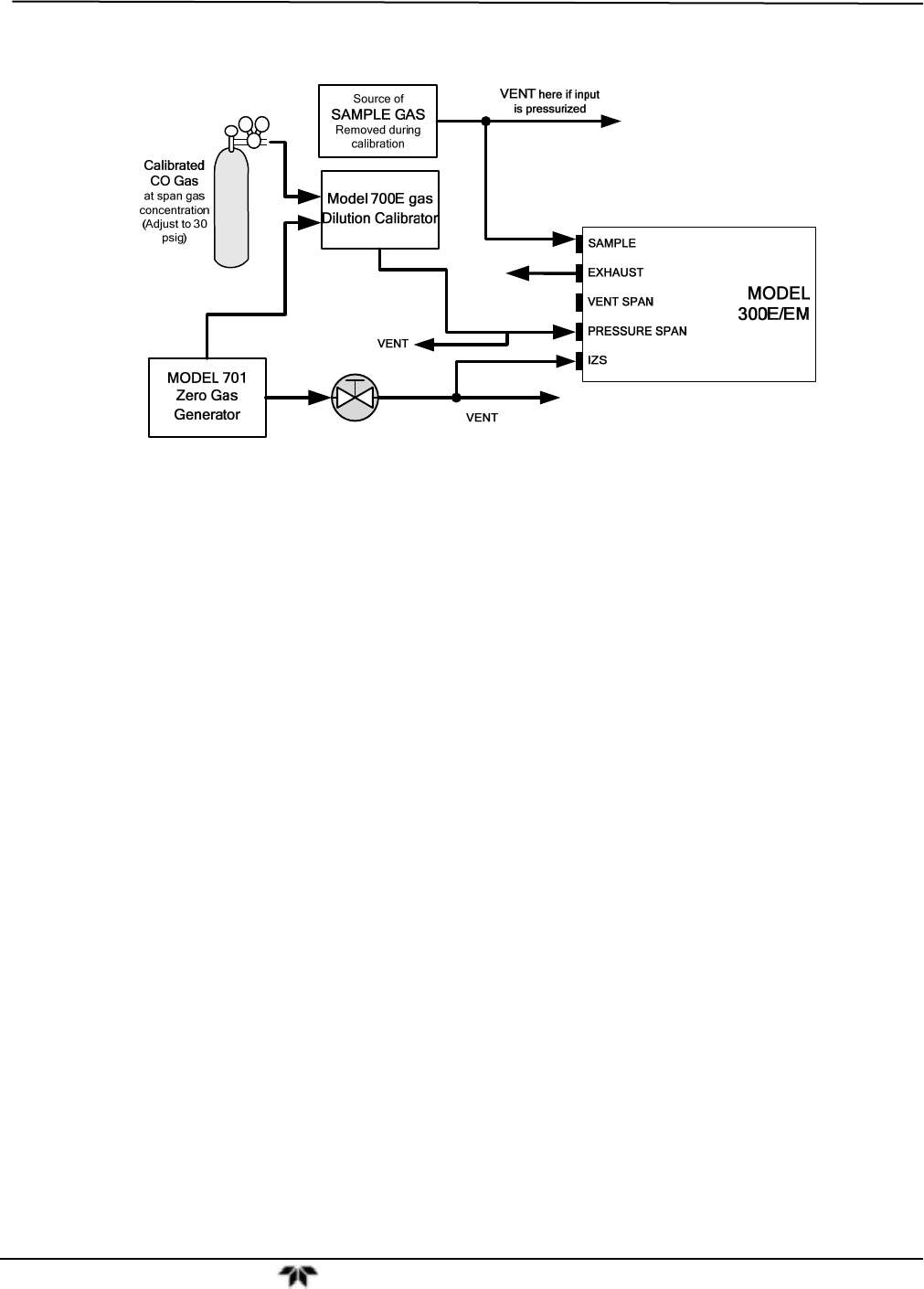
Optional Hardware and Software Model GFC7001E Carbon Dioxide Analyzer
Teledyne Analytical Instruments 66
5.6.2.2. Pneumatic Set Up (OPT 50A)
See Figure 3-2 for the location of gas inlets and
Figure 5-4: Pneumatic Connections – Option 50A: Zero/Span Calibration Valves
SAMPLE GAS SOURCE:
Attach a sample inlet line to the sample inlet port. The SAMPLE input line should not be more than 2 meters
long.
Maximum pressure of any gas at the sample inlet should not exceed 1.5 in-hg above ambient pressure
and ideally should equal ambient atmospheric pressure.
In applications where the sample gas is received from a pressurized manifold, a vent must be placed on
the sample gas before it enters the analyzer.
CALIBRATION GAS SOURCES:
A vent is required when an M700 is used with this option. However, if an M700E is used, a vent may or may not
be required depending on how the M700E output manifold is configured.
SPAN GAS:
Attach a gas line from the source of calibration gas (e.g. a Teledyne’s M700E Dynamic Dilution
Calibrator) to the SPAN inlet at 30 psig.
ZERO AIR:
Zero air is supplied via a zero air generator such as a Teledyne’s M701.
An adjustable valve is installed in the zero air supply line to regulate the gas flow.
5.6.2.3. Input Gas Venting
The zero air supply and sample gas line MUST be vented in order to ensure that the gases input do not exceed
the maximum inlet pressure of the analyzer as well as to prevent back diffusion and pressure effects. These
vents should be:
At least 0.2m long;
No more than 2m long and;
Vented outside the shelter or immediate area surrounding the instrument.
5.6.2.4. Exhaust Outlet
Attach an exhaust line to the analyzer’s EXHAUST outlet fitting. The exhaust line should be:
PTEF tubing; minimum O.D ¼”;
A maximum of 10 meters long;
Vented outside the analyzer’s enclosure.



